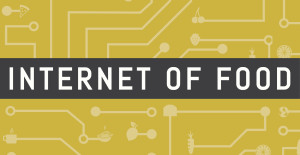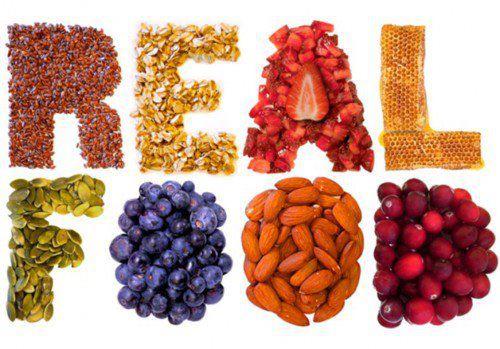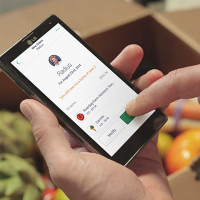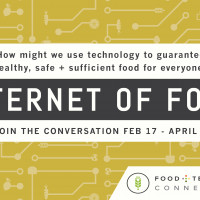Guest post by Lawrence Williams, Chairman of the Board – United States Healthful Food Council. The views expressed are solely those of the author and do not reflect the views of Food+Tech Connect.
It is not unusual for products and services that challenge conventional wisdom to experience long periods of slow adoption, and then almost overnight move into hockey stick-like growth, often unexpectedly due to a tweak in the model. As explained in Malcom Gladwell’s breakthrough book The Tipping Point, “little changes” can lead to a moment of critical mass.
Such was the case with Airbnb, which took five years to get its first million listings. But once it started providing free professional photographers to support listings, the second million came in six months, and 10 million about a year later.
In almost any market, consumer demand has the power to drive quality and affect the supply chain. As the availability and competition for high quality products increase, prices typically decrease, often making these products within reach even for the average consumer—and sometimes, disrupting antiquated business models along the way. And over time, high quality products eventually go mainstream as suppliers step in with more affordable offerings. Whether it’s the shiny gadget, fashion label or dining experience, reaching the masses is an important factor for long-term growth and economic success.
When you look at the mainstream food industry over the past couple of decades however, providing quality products has typically been an obstacle to success. The consumer demand for quality was too diluted to overcome the inertia of ubiquitous, highly processed “cheap” food. Defining success by pure economics meant that most foodservice operators have been engaged in a dangerous price-driven race to the bottom. This race leaves food quality and consumer health out of the equation and ultimately contributes to a public health crisis with massive economic and environmental consequences.
Today’s rising obesity and diabetes rates are accompanied by growing healthcare costs and environmental concerns as a result of our food choices. And as the alarming economic forecasts loom, government-led initiatives continue to emerge. Mandatory menu labeling is going national, and new dietary recommendations for the first time, take into account environmental sustainability. While the long-term impact on consumer demand and food quality of such measures remains to be seen, it’s clear that the intention is to amplify consumer awareness around food choices.
So how does food quality become part of the recipe of success?
Consumers can only reward quality if they are armed with the proper tools, which is why Responsible Epicurean and Agricultural Leadership (REAL) Certified was developed. Recognizing the increasingly influential role that restaurants and foodservice providers have in establishing dietary habits, REAL is designed to provide industry incentives to prioritize nutrition and environmental sustainability.
Similar to LEED Certification that has helped revolutionize the building industry, spurring innovation in design and materials that support energy efficiency and environmentally friendly practices, REAL is designed to empower consumers to demand higher quality food. And like LEED, REAL can help align the industry’s incentives with consumer’s health and environmental interests. In doing so, REAL can not only help redefine the competitive landscape, but also build consumer demand for healthful and sustainable food – and provide the industry incentives to help ensure higher standards fuel successful business models throughout the food system.
So while a certification program like REAL Certified is probably not the “silver bullet” technology that will guarantee healthy, safe and sufficient food for everyone, it might just prove to do for food what photographers did for Airbnb.
 Internet of Food is editorial series exploring how we might use technology, new business models and design to guarantee healthy, safe and sufficient food for everyone? Join the conversation between February 17 and April 2. Share your ideas in the comments, on Twitter using#internetoffood, Facebook or LinkedIn.
Internet of Food is editorial series exploring how we might use technology, new business models and design to guarantee healthy, safe and sufficient food for everyone? Join the conversation between February 17 and April 2. Share your ideas in the comments, on Twitter using#internetoffood, Facebook or LinkedIn.
_______________
 Lawrence Williams is an entrepreneur who is passionate about technology, food and health. He has dedicated his career to developing public-private partnership solutions to some of the world’s most vexing problems. Most recently, Lawrence helped Elon Musk and SpaceX collaborate with NASA to develop a domestic commercial crew and cargo program to replace the Space Shuttle. Prior to SpaceX, he was the lead for wireless pioneer Craig McCaw and Bill Gates’ Teledesic in negotiating the radio frequency access to make broadband access ubiquitous through the use of low-Earth orbiting satellites.
Lawrence Williams is an entrepreneur who is passionate about technology, food and health. He has dedicated his career to developing public-private partnership solutions to some of the world’s most vexing problems. Most recently, Lawrence helped Elon Musk and SpaceX collaborate with NASA to develop a domestic commercial crew and cargo program to replace the Space Shuttle. Prior to SpaceX, he was the lead for wireless pioneer Craig McCaw and Bill Gates’ Teledesic in negotiating the radio frequency access to make broadband access ubiquitous through the use of low-Earth orbiting satellites.






